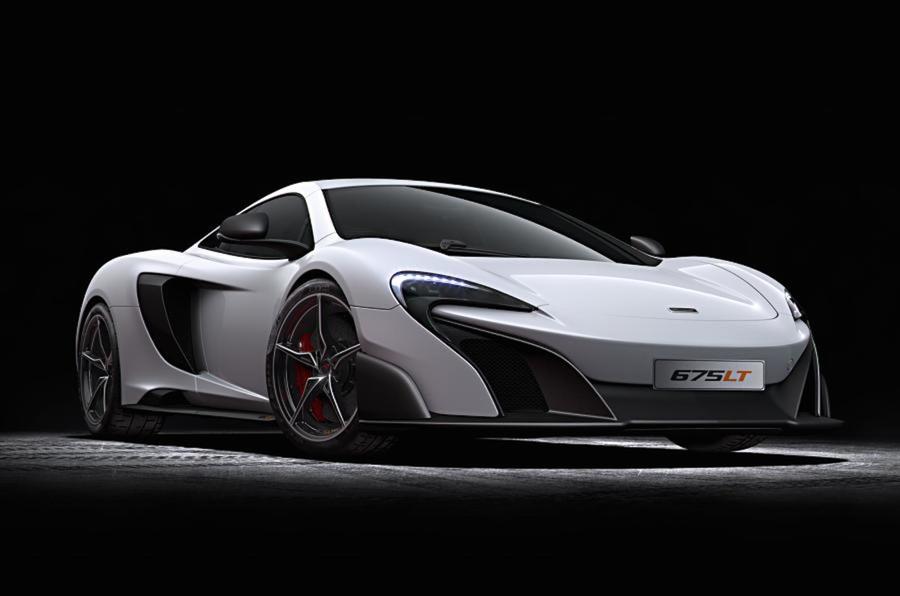McLaren has officially pulled the wraps from the 675LT (Longtail), the latest addition to its Super Series range.
The new car is more track-focused than its stablemate the 650S and according to global marketing director, Jamie Corstophine, is something customers have asked for, rather than a point-scoring exercise in bettering competitors’ performance figures.
The new car goes on sale in July at a price of £259,500 and will be limited to 500 units. The 675LT is 100kg lighter and at 666bhp, 25bhp more powerful than the 650S, and that much was revealed before the show. However, further details revealed by McLaren suggest technical changes should add up to an enhanced driving experience that goes beyond mere brute power.
First, there’s the weight: 100kg is a lot. It’s the equivalent of an average male person plus an airline baggage allowance. “The reduction in mass makes the biggest difference to the way the car feels,” says Mark Vinnels, McLaren’s programme development chief.
Weight has been paired from “wherever we could find it” he adds, including from suspension components, the wheels, which are the lightest ever fitted to a McLaren production car, body panels and the carbonfibre wing that not only contributes to the 675LT’s 40% higher downforce but is lighter than the one fitted to the 650S. The exhaust is made from super-lightweight Titanium and crosses over to allow an optimum, longer length to be packaged inside the car.
The net result is a supercar that’s even more connected to the driver than the 650S, if that’s possible, and nimble, too. “Put a bit of lock on, with the ESP off, and the car will pirouette around the nose badge in perfect doughnuts,” enthuses Vinnels.
Chris Goodwin, the development driver, explains how his team worked hard to exploit those characteristics with fine tuning of the suspension geometry, and to connect the driver with them. Goodwin subscribes to the traditional philosophy that to get the best from a car, the driver should feel part of it. A snug-fitting seat and good pedal feel are essential to create that sensation of being wedded to the car “but they’re not everything,” he says.





Join the debate
Add your comment
Naming a car after its power output
The name Ferrari 458 Speciale rolls off the tounge. Mclaren 675 LT does not!! Why didnt they call it Mclaren Superlight or something like that?
Ho hum........